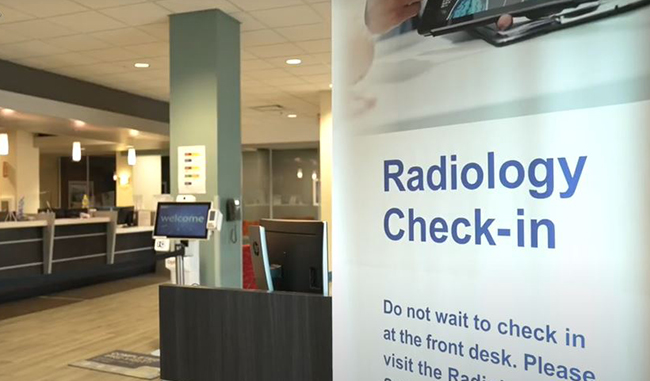
What the numbers mean: How to read your at-home blood pressure monitor
Even if a person has been using a blood pressure monitor on their own for a while, it can help to have a refresher on what each number means for their health.
About half of American adults live with high blood pressure, also known as hypertension.
Monitoring blood pressure is a great step toward taking care of cardiovascular health.
The American Heart Association (AHA) recommends using an automatic blood pressure monitor with an upper arm cuff to get the most accurate readings at home.
Reading the monitor can be confusing at first, but once a person knows what a few key numbers mean, it can be an easy way to stay on top of heart health.
Here’s how to read a blood pressure monitor.
What do the numbers on the screen mean?
Here are the numbers that commonly appear on typical blood pressure monitors and what they mean:
- Systolic blood pressure (the higher number on top)
- Diastolic blood pressure (the lower number on the bottom)
- Heart rate or “pulse”
The systolic and diastolic numbers are represented with a slash between them, similar to how fraction numbers are represented: 120/80. In this case, 120 is the systolic blood pressure, and 80 is the diastolic blood pressure.
Both systolic and diastolic numbers use millimeters of mercury (mm Hg) as a measurement. Together, the two numbers make up a person’s blood pressure.
Most blood pressure monitors also measure heart rate. The heart rate usually appears separately as a smaller number at the bottom of the screen.
Some blood pressure monitors also display the date and time.
The higher number on the top
The higher number on top is systolic blood pressure. It represents the higher pressure inside blood vessels when the heart beats. During each heartbeat, the heart temporarily increases pressure in the blood vessels.
Systolic blood pressure (the higher number) typically falls in six stages:
- Low: 90 or lower (see a doctor)
- Normal: 91 to 119
- Elevated: 120 to 129 (see a doctor)
- High blood pressure stage 1: 130 to 139 (see a doctor right away)
- High blood pressure stage 2: 140 to 179 (see a doctor right away)
- Hypertensive crisis: 180 or higher (call 911)
The lower number on the bottom
The lower number is diastolic blood pressure. It’s the pressure inside blood vessels when the heart is at rest between beats, exerting less pressure on the blood vessels. Diastolic blood pressure is usually a lower number than the systolic blood pressure.
Diastolic blood pressure (lower number) also has six stages, although the number ranges are different than systolic blood pressure:
- Low: 60 or lower (see a doctor)
- Normal: 61 to 79
- Elevated: less than 80 (but the systolic pressure is elevated)
- High blood pressure stage 1: 80 to 89 (see a doctor right away)
- High blood pressure stage 2: 90 to 119 (see a doctor right away)
- Hypertensive crisis: 120 or higher (call 911)
Heart rate or “pulse”
Heart rate isn’t an essential blood pressure reading but can be a heart health indicator.
Heart rate (pulse) is measured in beats per minute.
A resting heart rate between 60 and 100 beats per minute is normal for adults, but people who are physically active and have strong heart muscles can have heart rates as low as 40 beats per minute.
Keep in mind that medications can change a person’s typical heart rate range. If a person is taking medications, they should ask their doctor what resting heart rate range would be considered normal for them.
Other things to know about blood pressure
Here are answers to common questions about using a blood pressure monitor at home.
What if just one number is elevated, but the other is normal?
It can be confusing if systolic blood pressure is high but diastolic blood pressure is within the normal range within the same blood pressure reading.
A person should still speak with their provider in cases where just one number is elevated.
It can also help to take multiple blood pressure readings to verify the results, pausing a few minutes between readings.
For example, a 128/70 mm Hg blood pressure reading has an elevated systolic blood pressure (128) but a normal diastolic blood pressure (70). If a person is getting readings like these over multiple blood pressure measurements, they should discuss it with their provider.
The same rule applies if the systolic and diastolic numbers are in different categories of urgency.
For example, for 144/88 mm Hg blood pressure, the systolic pressure (144) is in the range of high blood pressure stage 2, while the diastolic blood pressure (88) is in the range of high blood pressure stage 1. Since both are higher than normal, it’s a good idea to speak with a provider.
What to do before taking blood pressure at home
Try to take blood pressure readings at the same time every day.
Before taking blood pressure readings:
- Avoid alcohol, tobacco and caffeine for at least 30 minutes
- Wait at least 30 minutes after exercising
- Use the bathroom
When taking blood pressure, sit in a straight-backed chair with both feet on the floor, keeping them uncrossed. Place the arm with the blood pressure cuff on the table at heart level.
Readings can fluctuate
Blood pressure readings can change minute-to-minute and day-to-day. It can change depending on whether a person has recently exercised, rested or taken certain medications, or if they’ve had tobacco, caffeine or alcohol.
Even body position can affect blood pressure — sitting vs. lying down, for example.
This means that one high reading isn’t necessarily a cause for concern. That is why taking multiple readings, often over multiple days, can help track accurate blood pressure readings and identify any trends.
Some people may become anxious when they see a high reading, and it may cause their blood pressure to increase on subsequent readings. Try to limit readings to twice or three times in one sitting.
People should take a minute to calm themselves between readings. It’s also a good idea to take readings 1 minute apart.
Keeping a record is a good idea
If a person or their doctor is concerned about blood pressure, it can be helpful to make a habit of taking readings regularly and recording them.
The records can give a doctor a good idea of a person’s overall blood pressure trend. This series of readings can be more useful than a single one taken in a doctor’s office as it gives them more data on their patient’s health.
A person can record blood pressure readings anywhere, like in a booklet kept in their blood pressure monitor case, an app, or a spreadsheet.
Each blood pressure record should include:
- Systolic pressure (top, higher number)
- Diastolic pressure (bottom, lower number)
- Heart rate
When to speak with a doctor
If a person has a blood pressure of 180/120 mm Hg or higher, and they’ve confirmed this with at least two blood pressure readings, they should call 911 right away. This is known as a hypertensive crisis and requires immediate medical attention.
Even if a person doesn’t have crisis-level blood pressure readings, if they know they have high blood pressure, it’s important to see their provider regularly. Monitoring blood pressure at home isn’t a replacement for seeing a doctor.
Takeaway
Monitoring your blood pressure with an at-home blood pressure monitor is a great way to stay on top of heart health.
A log of blood pressure readings can help doctors understand a person’s current health status and whether their medications and lifestyle interventions are working.
If a person is unsure how to read or understand their blood pressure monitor, they should consider taking it to their next doctor’s appointment and asking for help in person.
The cardiology team at Crystal Run Healthcare is here to help every step of the way. From testing to diagnosis and management, Crystal Run’s Cardiologists are available to manage several heart conditions, including high blood pressure.
- Home blood pressure monitoring. (2024). https://www.heart.org/en/health-topics/high-blood-pressure/understanding-blood-pressure-readings/monitoring-your-blood-pressure-at-home
- Measuring blood pressure. (2024). https://medlineplus.gov/lab-tests/measuring-blood-pressure/
- Target heart rates chart. (2024). https://www.heart.org/en/healthy-living/fitness/fitness-basics/target-heart-rates

 Optum Radiology at Crystal Run Healthcare
Optum Radiology at Crystal Run Healthcare Request medical records online
Request medical records online